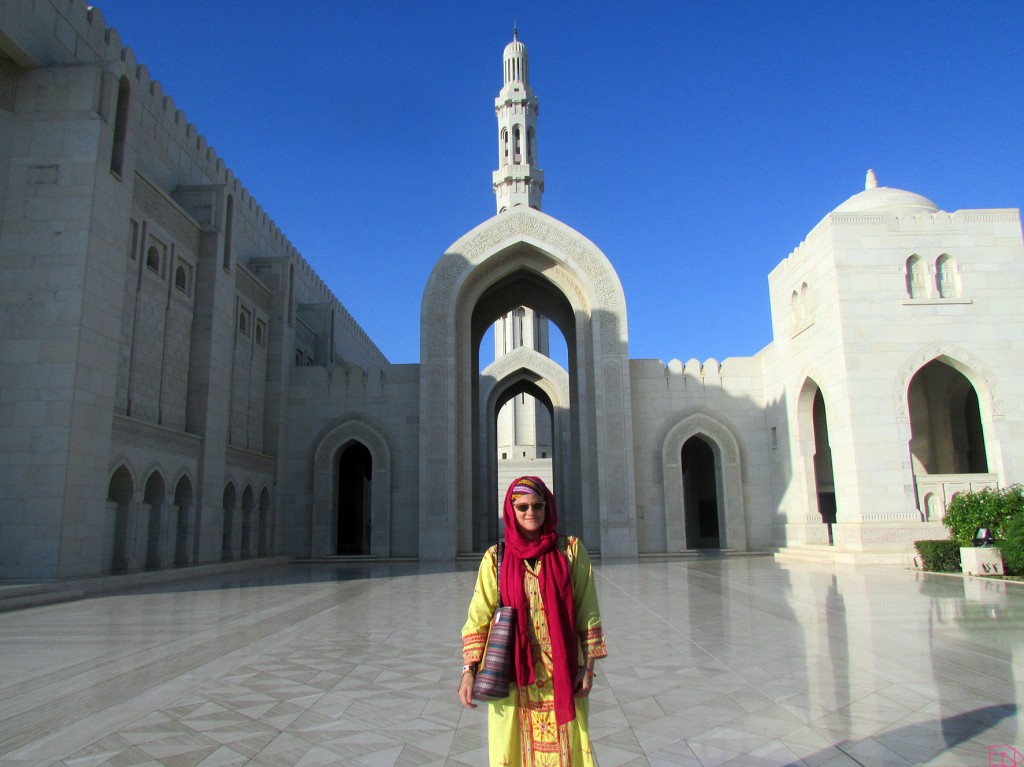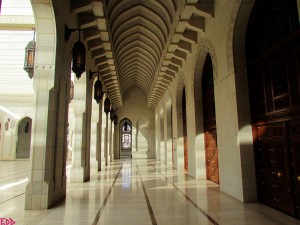
Today in Oman (Photo: Emily O'Dell)
This afternoon, I explored the Sultan Qaboos Grand Mosque in Muscat — a true architectural wonder in every way. Unlike any other mosque in the world, the Sultan Qaboos Grand Mosque showcases a diverse array of artistic and architectural styles from different Islamic eras and regions around the world — from Andalusia to China.

Persian Kashi Hall (Photo: Emily O'Dell)

Humbling arches (Photo: Emily O'Dell)
The Sultan Qaboos Grand Mosque, a masterpiece of modern Islamic architecture, was a gift to the people of the Sultanate of Oman from His Majesty Sultan Qaboos to commemorate the 30th year of his reign. Construction of this enormous sandstone mosque began in 1995, and it was inaugurated by His Majesty Sultan Qaboos in 2001.

Inspiring reflection (Photo: Emily O'Dell)
The mosque is famous for its gigantic Persian carpet which weaves together classical Persian Tabriz, Kashan, and Isfahan designs. It measures 70m by 60m wide (it’s the second-largest hand-loomed Iranian carpet in the world), weighs 21 tons, and contains 1,700 million knots. From the mosque’s rich carpet to its reflective marble floors and heaven-bound arches, the Sultan Qaboos Grand Mosque embodies a harmonious blend of different Islamic art traditions — setting tolerance and “unity in diversity” in stone.